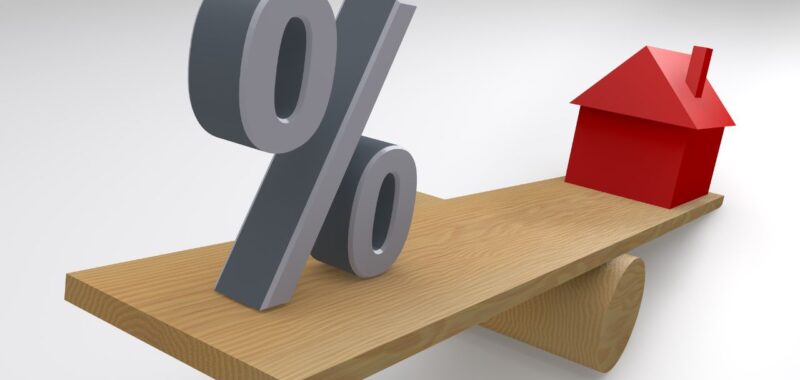A 14th cash rate hike is once again on the table, after the monthly inflation rose to 4 per cent in May.
According to the Australian Bureau of Statistics (ABS) figures, annual inflation increased for the third month in a row and is now at its highest level since November 2023.
Leading the charge was electricity, automotive fuel, rents and insurance.
Fruit and vegetables also saw a notable rise.
Removing volatile items and holiday travel, however, the monthly indicator dropped from 4.1 per cent to 4 per cent – an important measure in the eyes of the RBA.
Rate City Research Director, Sally Tindall, said next month’s quarterly CPI figures would be a moment of truth for the RBA.
“If it’s way off track, the Board will have no choice but to act, potentially as soon as August,” she said.
“The wait-and-see approach has suited the RBA up until now, however, the reality is, after five consecutive meetings on hold, the Board is running out of runway to keep going in this holding pattern.
“The Board is likely to have wanted to take the time to see how the extra cash from the stage three tax cuts and the electricity rebate had on household consumption, but with the clock ticking in the background it could well speed up any decision to hike.”
But Real Estate Institute of Australia (REIA) President, Leanne Pilkington, urged the market not to get ahead of itself in expecting a rate increase.
“Whilst this is disappointing it needs to be remembered that the monthly CPI indicator is not as comprehensive as the ABS’s quarterly inflation data, as it only updates prices for between 62 per cent and 73 per cent of the consumer price index basket,” she noted.
“It is the June quarter figure which will be more reliable and be integral to the RBA’s decision at its next Board meeting in August.”
Ms Pilkington said inflation had proved to be “sticky” not just in Australia, but other countries around the world.
“The most significant price rises were housing (up 5.2 per cent), food and non-alcoholic beverages (up 3.3 per cent), alcohol and tobacco (up 6.7 per cent) and transport (up 4.9 per cent),” she said.
“Rents are showing a modest but welcome abatement in the rate of increase.
“Rents increased 7.4 per cent in the 12 months to May, down from 7.5 per cent in April and 7.7 per cent in March.”
Ms Pilkington said the CPI figures needed to be taken against the background of an economy that was barely growing.
“Whilst headline unemployment declined slightly in May, the trend unemployment rate rose a little from 3.9 per cent to 4 per cent, to its highest level since Covid lockdowns,” she said.
“GDP growth in the March quarter was 0.1 per cent and 1.1 per cent for the year and trending down – on a per capita basis we have had four consecutive quarters of negative growth.”
Ms Pilkington said the uptick in inflation should not, in itself, flag an interest rate rise, but a delay in any cut.
“Complicating the timing of any cut in interest rates is the cumulative impact the Federal and State Budgets could have on inflation later in the year,” she said.
“The various ‘cost of living measures’ might increase consumer demand and, with a lag, higher inflation.
“It would be ironic if these measures lead to higher mortgage costs for longer.”
Master Builders Australia Chief Executive Officer, Denita Wawn, said inflation was again heading in the wrong direction and serious action had to be taken to bring down building costs and boost housing supply.
“Builders are pulling their hair out over their concerns, continuously falling on deaf ears,” she said.
“Inflation is a capacity killer, making investment more expensive and less attractive.
“On the ground, we continue to hear projects for new homes, commercial or infrastructure construction simply don’t stack up because it takes too long to build and is too costly.
“If we don’t get inflation under control and urgently start boosting housing supply we are in for a lengthy period of pain and depressed construction activity.
“We know governments have acknowledged that more reform is needed to reduce building costs but the rubber needs to hit the road.”
Ms Wawn said it wasn’t impossible to bring inflation down.
“Bringing down housing and rental inflation can only be achieved once we get a move on and speed up planning reforms, address tradie shortages through domestic and skills migration pathways, reform the regulatory environment, and scrap damaging elements of recent IR changes,” she said.
“Looking ahead, Australia’s economic challenges will only be compounded by new pattern EBAs rolling out across the industry which will increase costs and drag productivity backwards.
“Unfortunately, the industry, which is at the coalface of overcoming the housing crisis and delivering the essential infrastructure that communities are crying out for, has been left powerless by an increasingly aggressive construction union.
“Enough is enough. It’s time to bring back an industry-specific regulator with real teeth and restore confidence in the building and construction industry.”
Canstar’s Group Executive Financial Services, Steve Mickenbecker, said an interest rate rise was almost certain in August.
“With scant evidence that inflation is moving towards the target band, the Reserve Bank will feel uncomfortable waiting a further three months for the following release of quarterly CPI, and will surely lift rates in August,” he said.
The risk of baked-in inflationary expectations is too high.”

